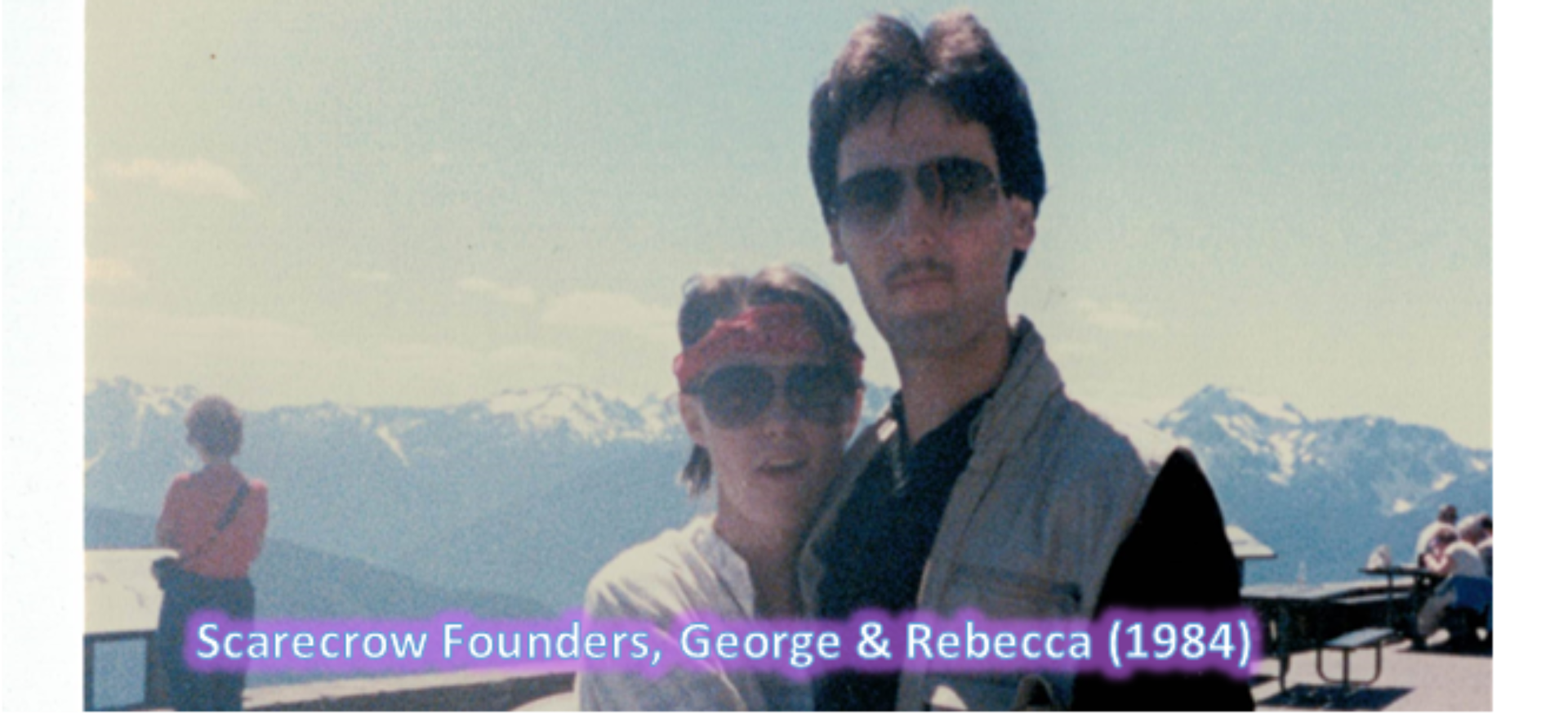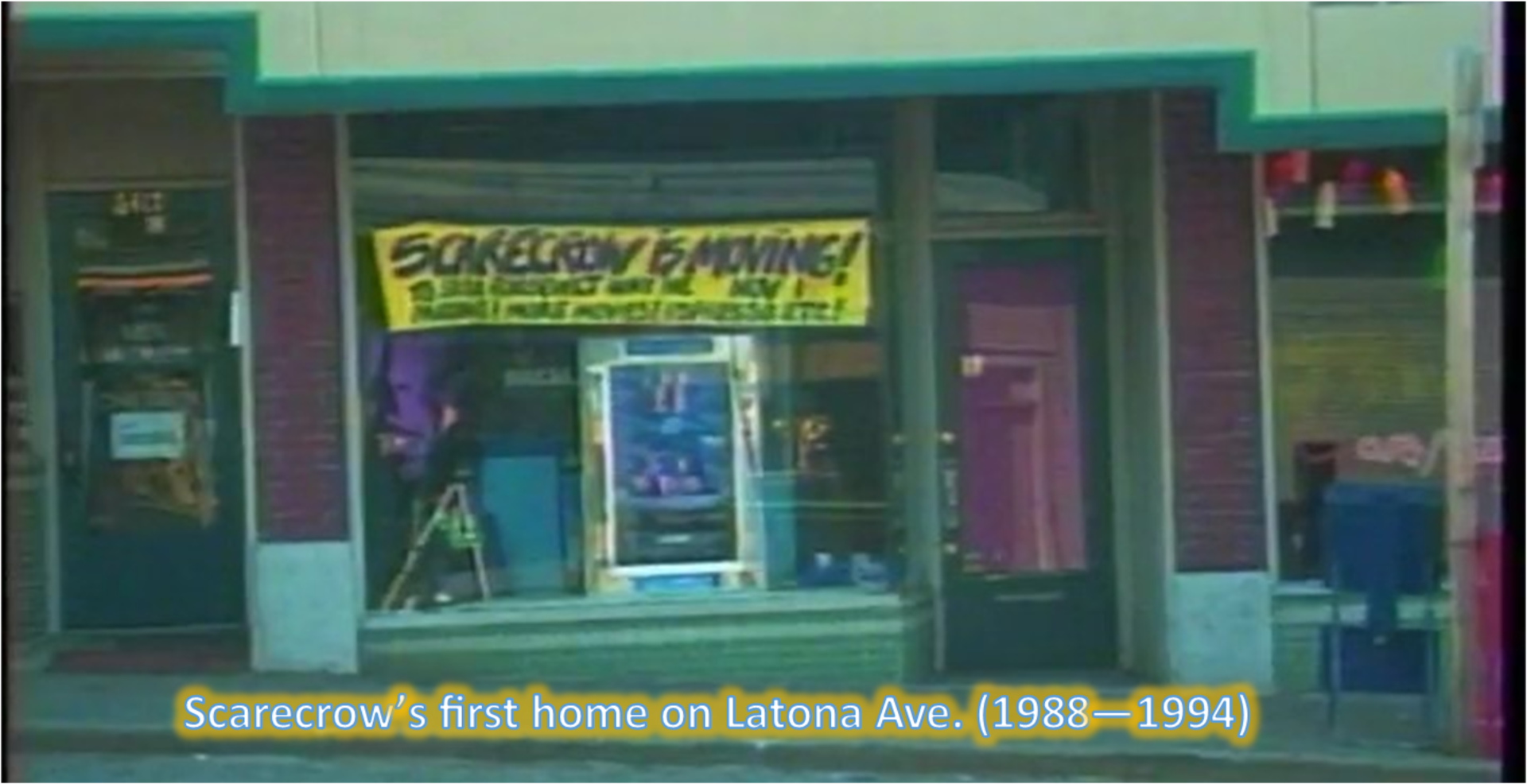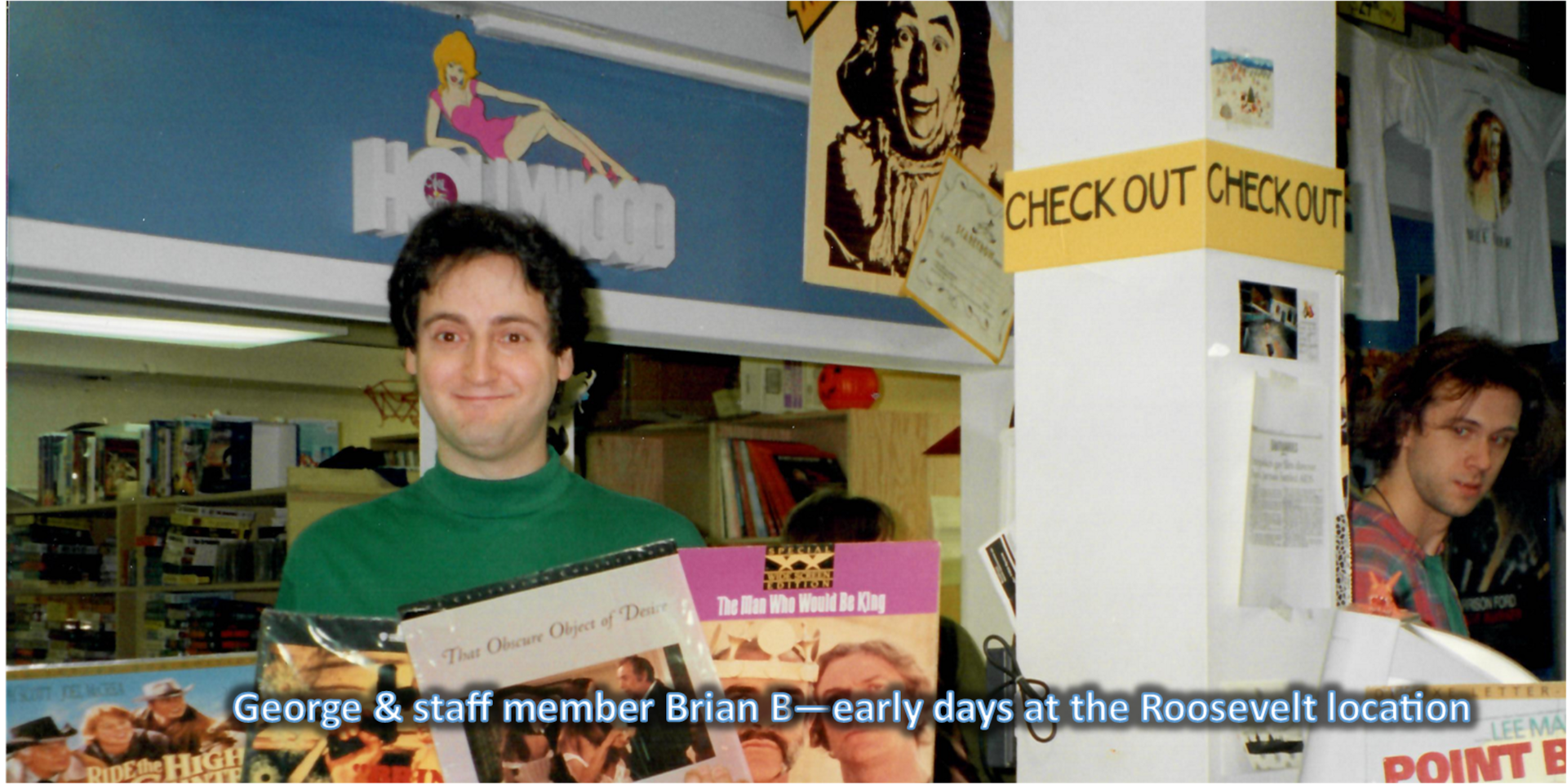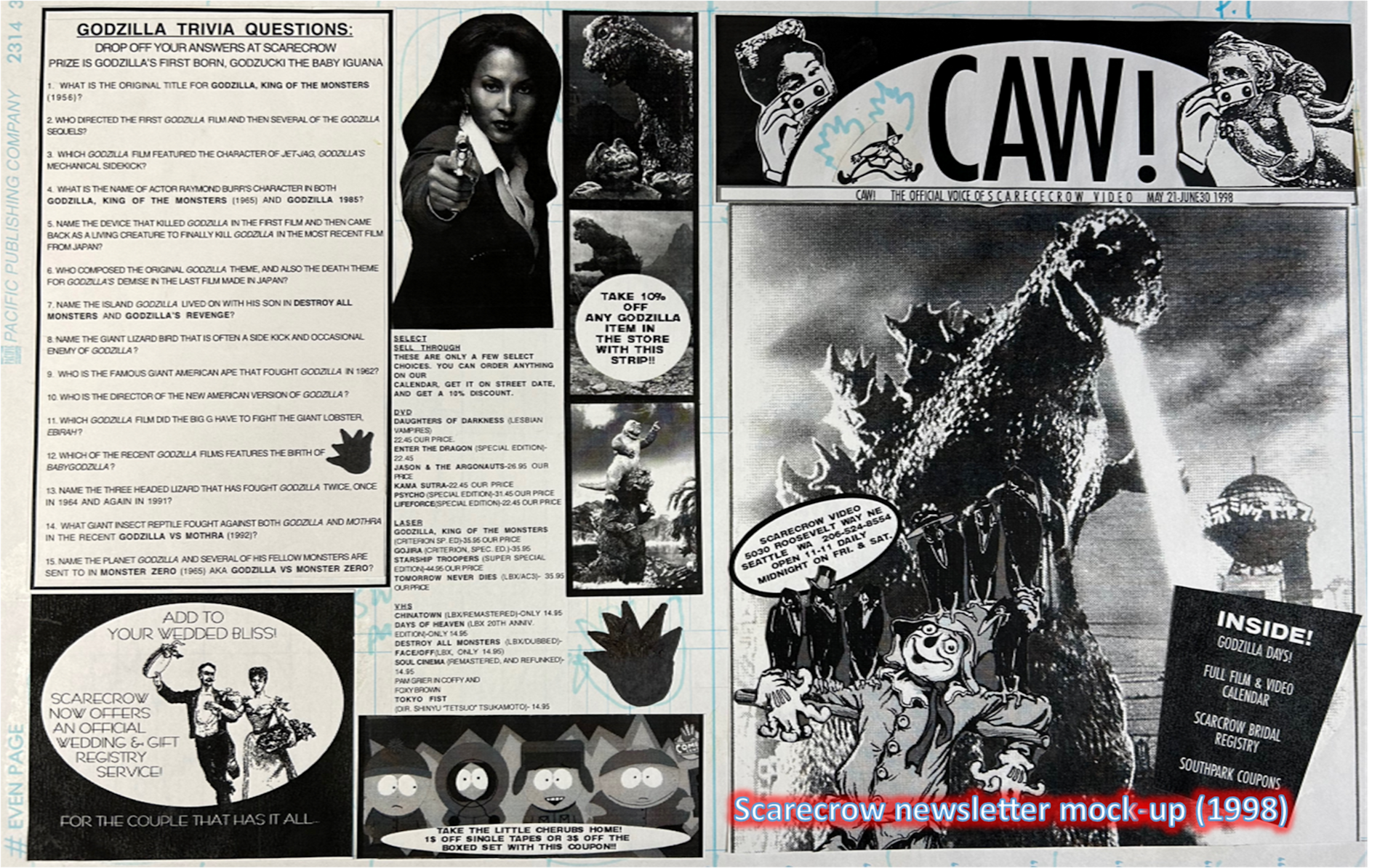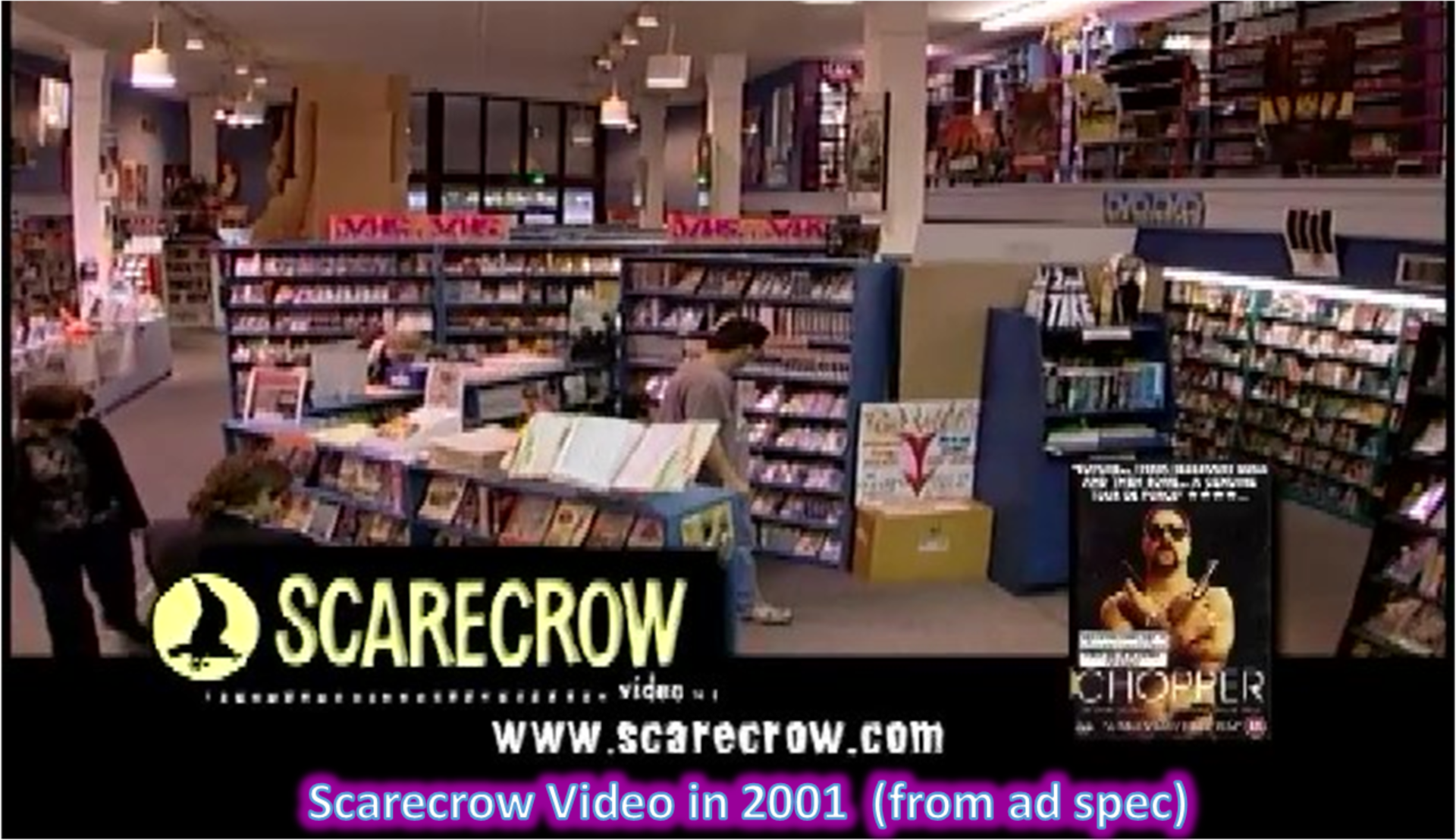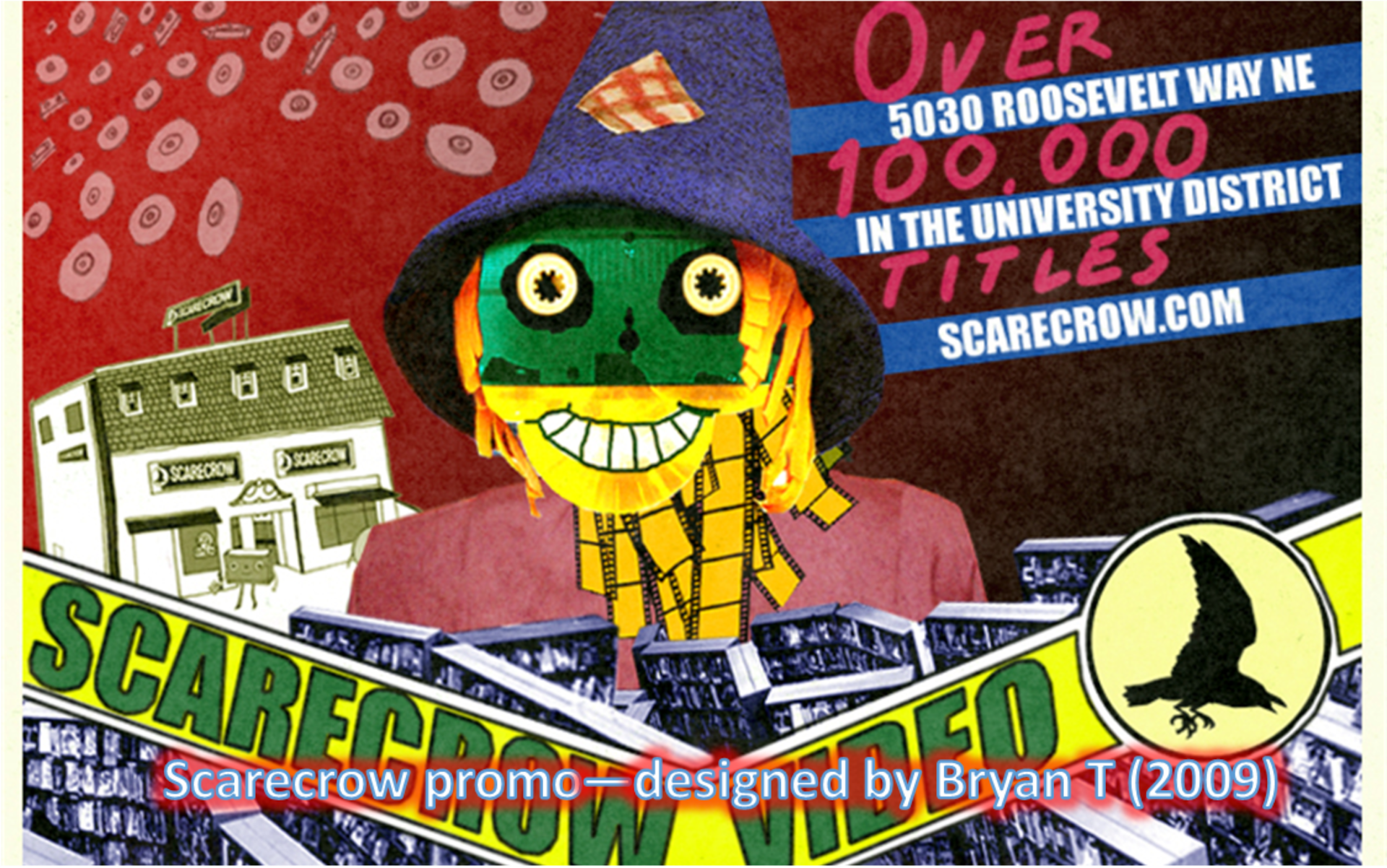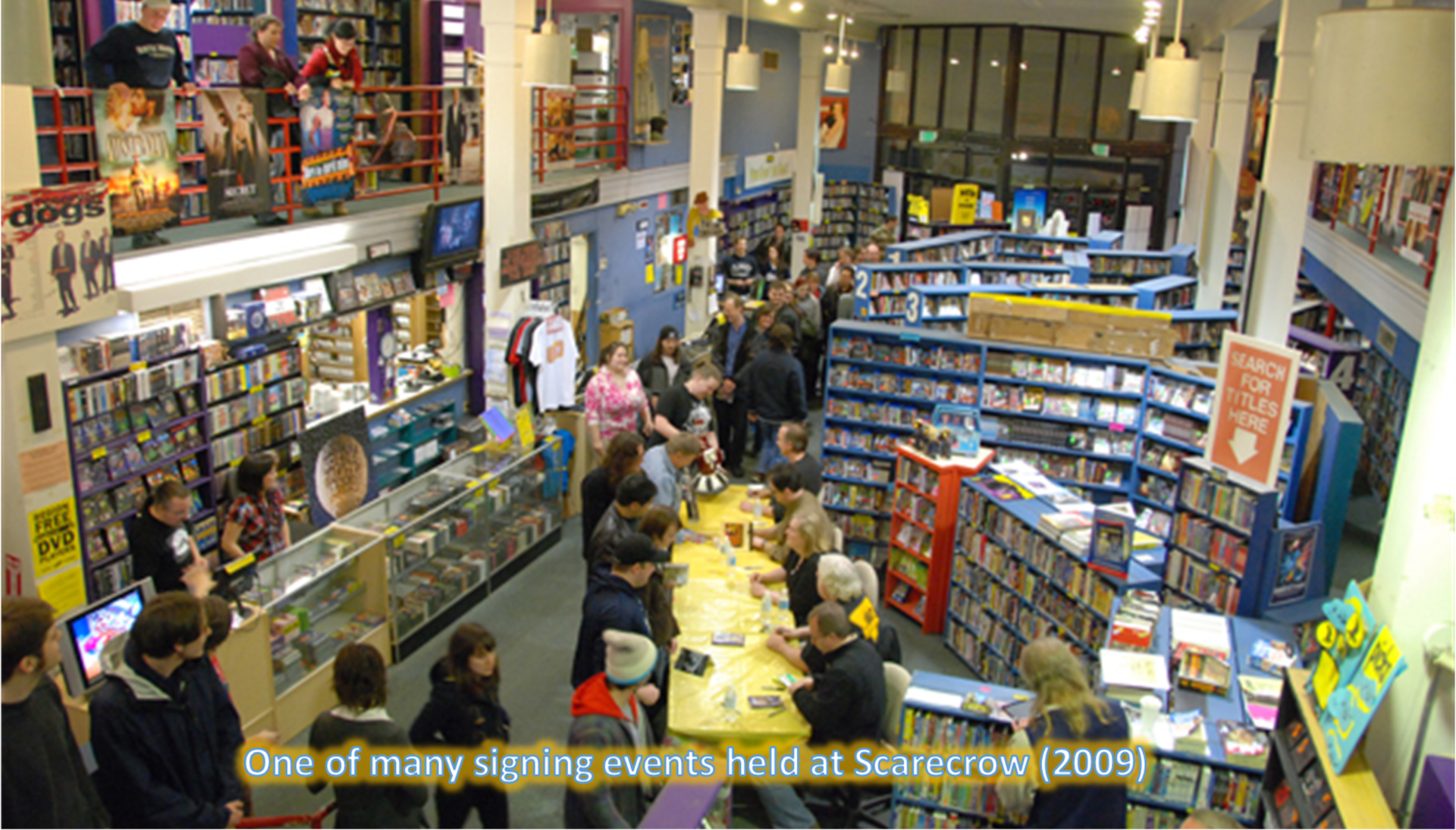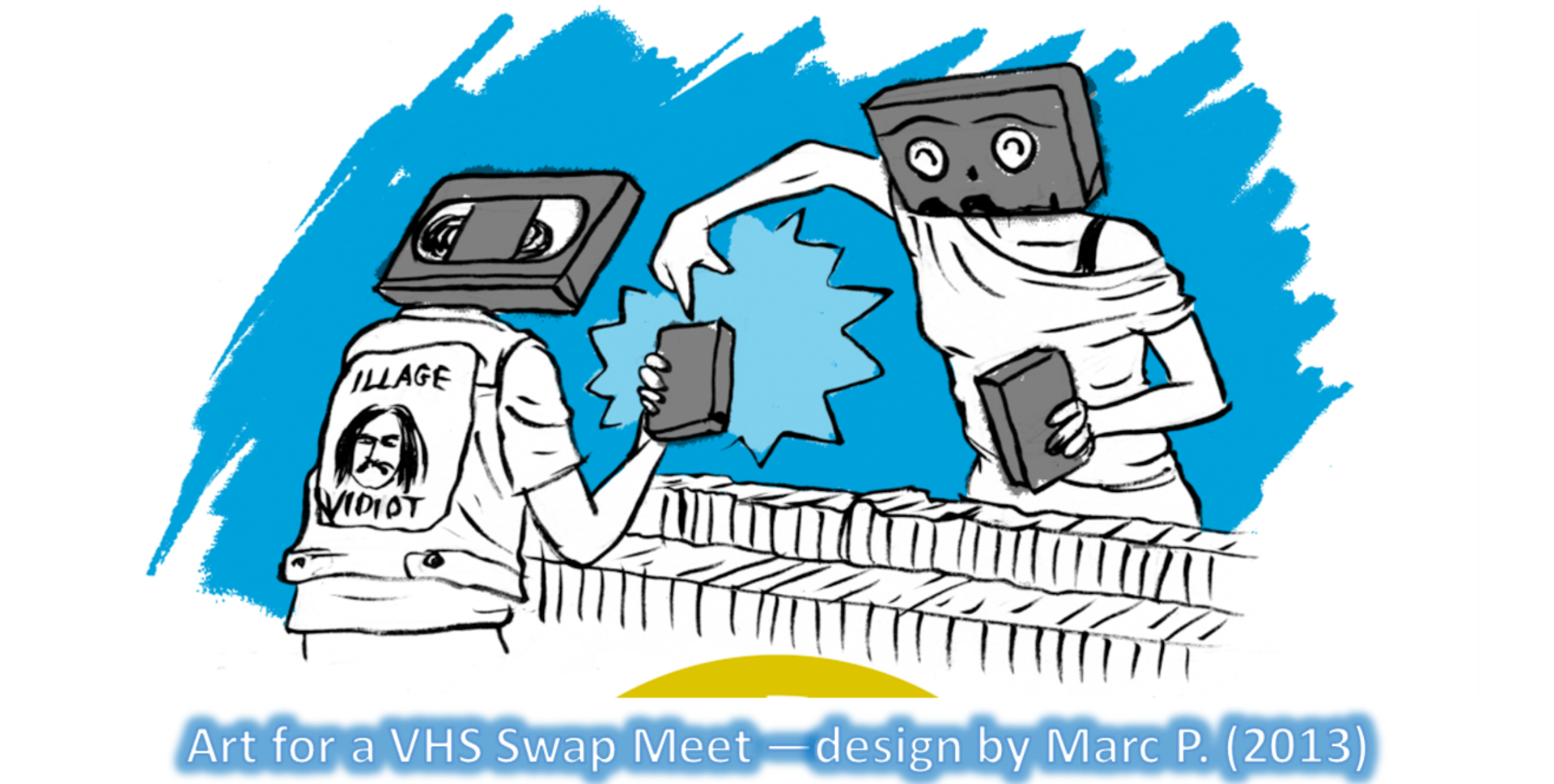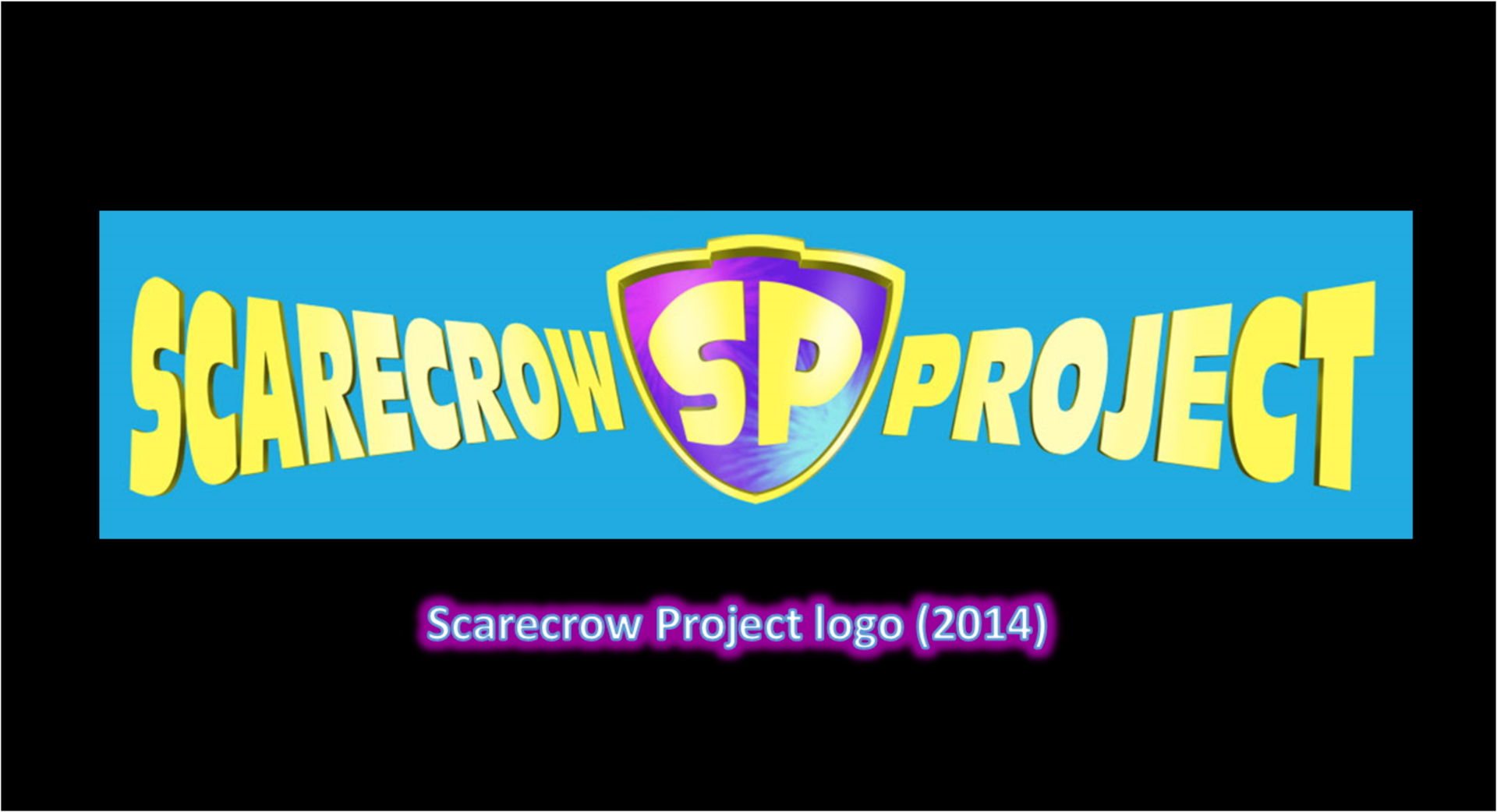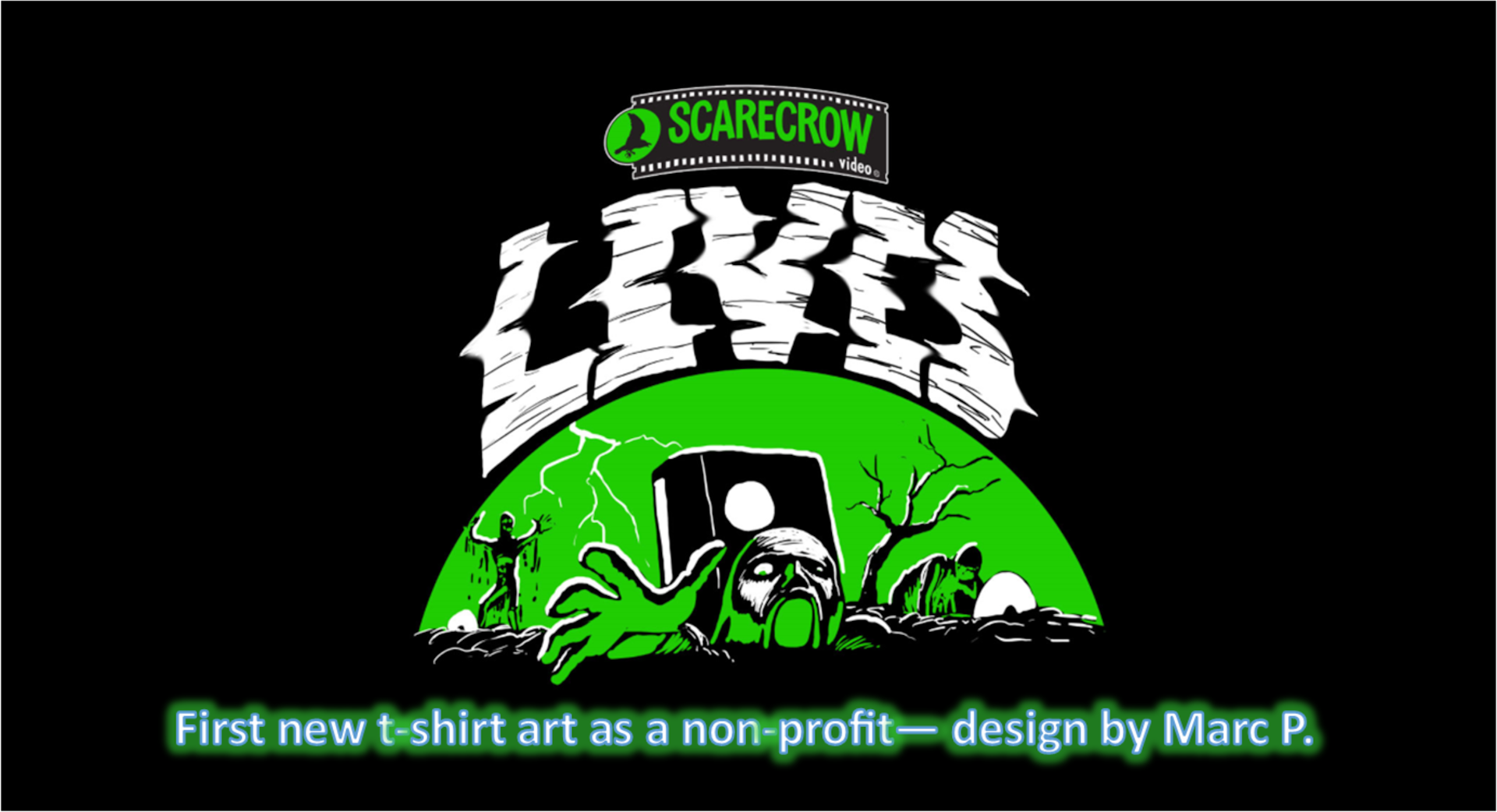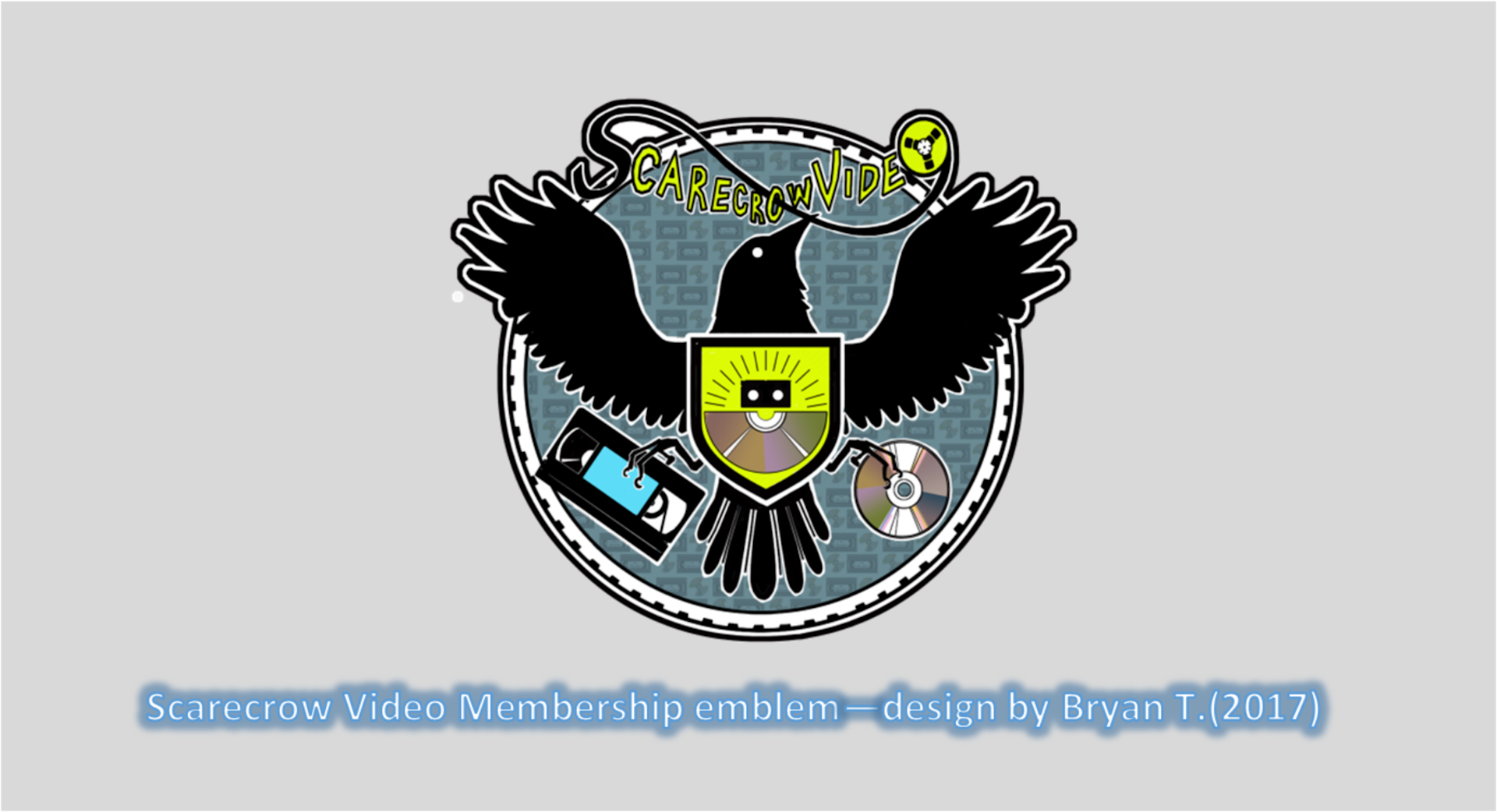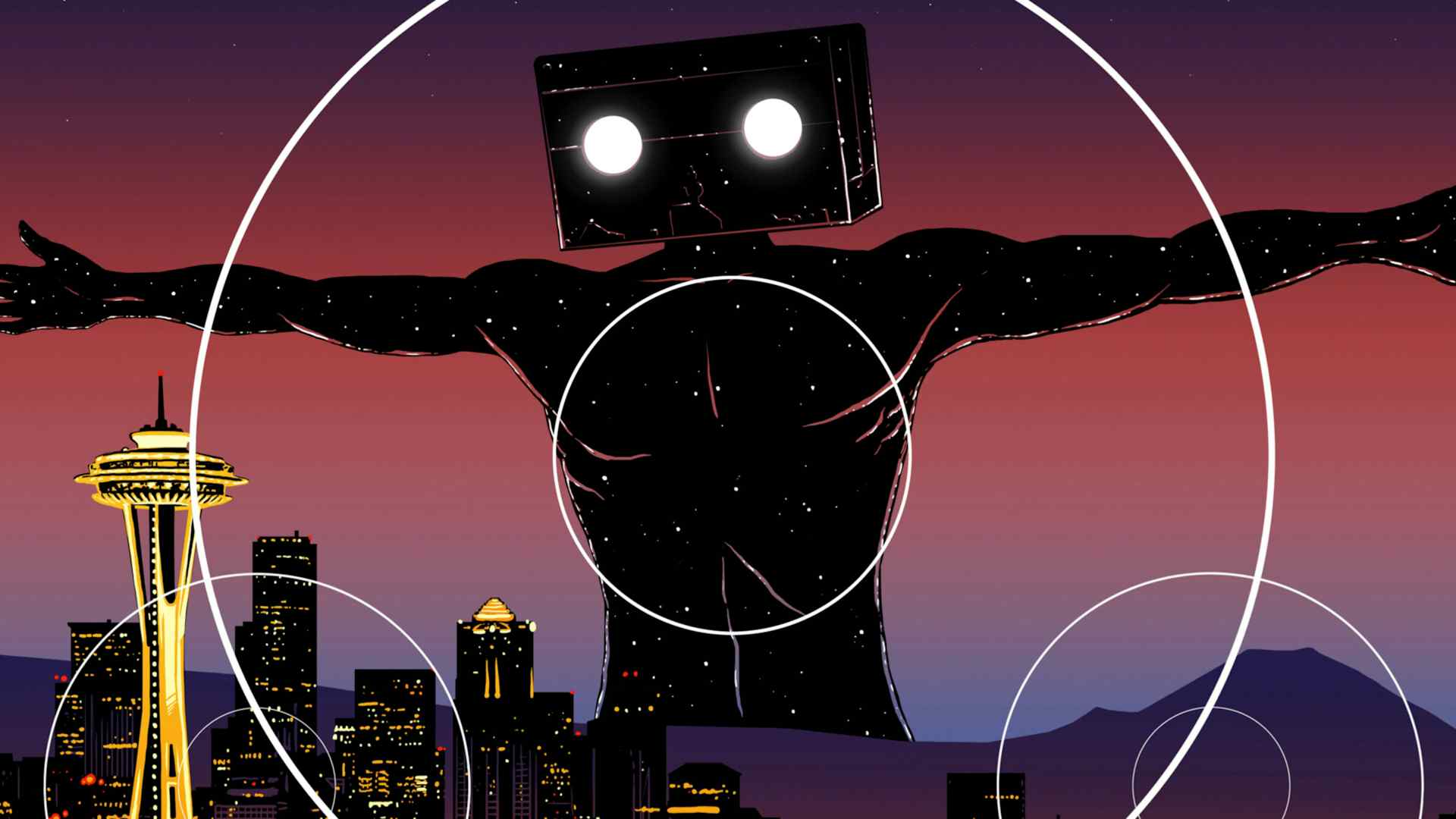
Our Story
Scarecrow Video's history is like so many of the movies it houses - some twists, some turns, some big names in film who came to visit. Read on to learn more about our epic journey... so far.
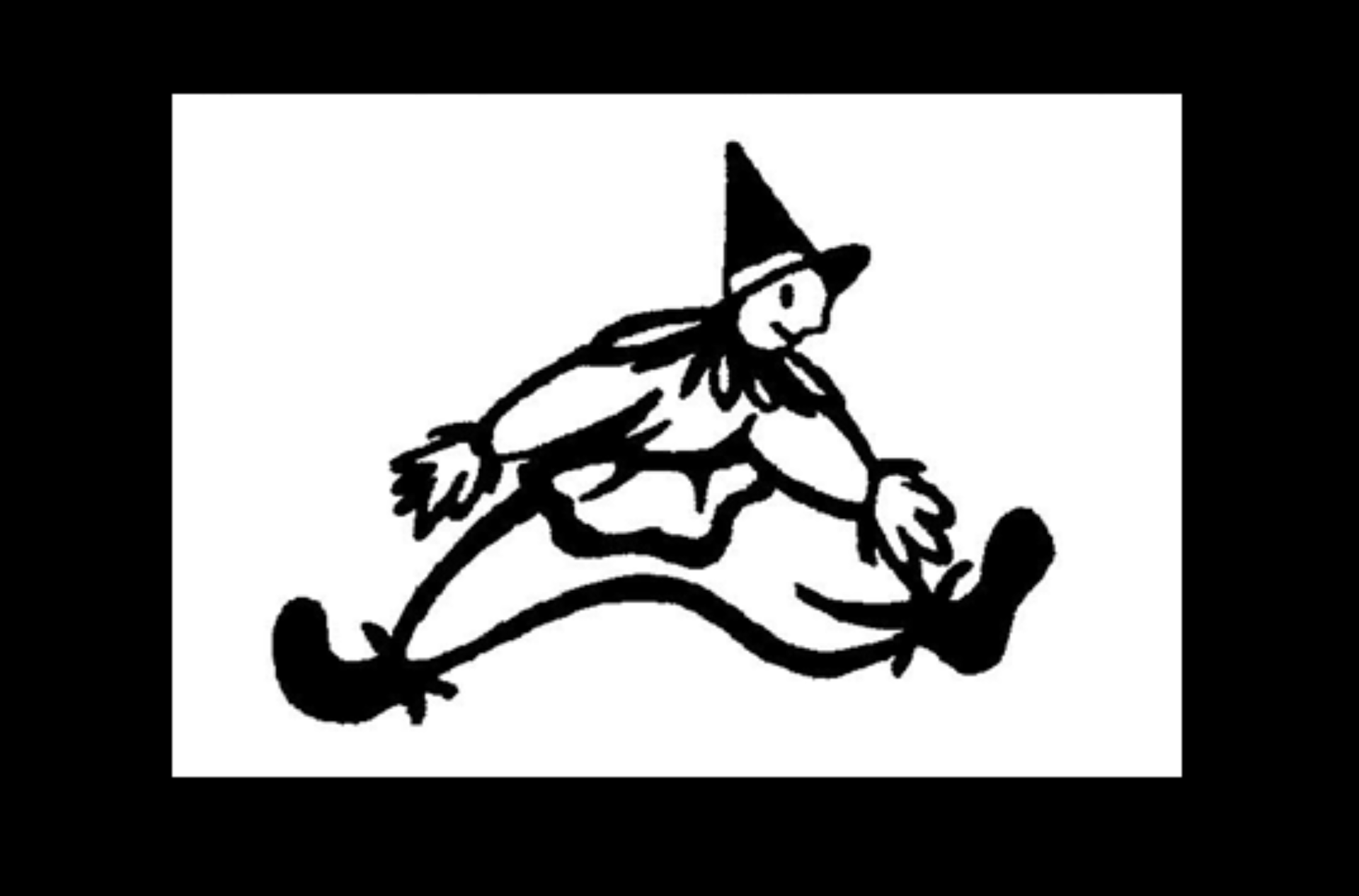
Part I: The George & Rebecca Years (1983 – 1998)
The story of Scarecrow Video starts in 1983 when Rebecca and George Latsios moved from Allentown, PA. to Seattle, WA. George always had a fondness for movies and played with the idea of starting his own video store. Try as they might, the lack of capital made the initial creation of a store impossible.
In 1986, George rented out about 200 of his own personal tapes in the back of Backtrack Records and Video. In 1988, while working as a general manager for Kamon of Lake Union Restaurant, George became frustrated with making money for other people — so he quit. He convinced Rebecca that the time was right to open a video store of their own, and on December 8, 1988 (promptly at noon) Scarecrow Video was born. Containing a huge inventory of 600 titles, the Latona store was but a ripple in the lake that would become Scarecrow. Five customers signed up that day (four of whom we’re pleased to still have with us), and the store’s first $36 was made.
Rebecca continued to work two jobs to help fund George’s project and spent her free time building the shelves for the new store. By 1990, the store had continued to morph, adding computer kiosks to help customers find videos, all the while increasing the number of titles available. Scarecrow even created a store for the sole purpose of renting Laserdiscs, and while Scarecrow Laser was closed down in 1995, it was an indication of Scarecrow’s desire to keep growing in new directions of cinema.
In 1992, Scarecrow encountered the first of what would become a recurring theme for the store: It ran out of space. They rented the adjoining retail space, and Scarecrow nearly doubled in size from 1,000 to 1,900 square feet. At this time, the first PAL tapes entered the store — letting people see things from far-away places or movies that were simply never released in the U.S.
It only took a year before that space just wasn’t enough. On November 19, 1993, Scarecrow moved a short distance to its current location at 5030 Roosevelt Way. With 8,600 square feet, there was plenty of room for the 18,000 titles that came along. There was enough space that in 1995 Scarecrow opened the Sanctuary Cinema on the second floor; with only 18 seats it was one of Seattle’s smaller movie houses, but it had a loyal following (besides, how cool was it to have a theater inside a video store!).
1995 was also the year that the first in a series of bad news events took place – George was diagnosed with a brain tumor and only months to live. Instead of slowing them down, this just increased George’s and Rebecca’s desire to make Scarecrow’s collection the largest and the best in the world. They traveled to Japan and Europe picking up movies along the way, and they put nearly every dime into bringing in more and more titles.
In 1997, Scarecrow became one of the first video stores in Seattle to add a major DVD section. The Sanctuary Cinema closed in 1998 in order to create more space for all the new additions. George had defied his prognosis and was continuing to fight for the thing he loved most - movies. However, this excess came with another cost – substantial debt. He was the first to admit that he was a movie guy, not a businessman. When the amount owing reached the hundreds of thousands, the foundation of Scarecrow began to crack, and bankruptcy was looming.
Part II: The Carl & Mickey Years (1999 - 2014)
In 1998, after an attempt by another party to buy the store had failed, two Microsoft employees and long-time customers, Carl Tostevin and John Dauphiny, found out about Scarecrow’s problems. Being movie lovers themselves, they couldn’t bear the thought of the Seattle institution closing down. There were many long conversations with the Latsioses and employees about preserving Scarecrow’s vision. On February 18, 1999, a sale was approved, and Carl and John along with Mickey McDonough became the new owners of Scarecrow Video. George and Rebecca stayed on as founders/managers until George succumbed to his illness and passed away in 2003. In 2004, John also bowed out, leaving Carl and Mickey to steer Scarecrow through the next 10 years of unimaginable highs and the start of a new kind of low.
During this fifteen-year stretch, Scarecrow grew and grew. VHS and laser discs made way for more DVDs and then Blu-rays. Video game rentals were even introduced for a short period. In 1997, Scarecrow had 34,000 titles, by 2001 this number had grown to 46,000, and in 2014 it had ballooned to 120,000. So many more titles in the same location meant continuous reimagining of the space and innovating ways to display the box art. At the start, everything could be on shelves and faced out. By 2014, most boxes on the shelves were spine out, and others were moved into sleeves and binders. They would rather face the challenge of making more room than turn down the opportunity to bring in hundreds, then thousands of movies and television shows.
This period was also one of branching out. In 2004, The Scarecrow Video Guide was published. This book consists of over 800 pages of film reviews and recommendations that were written by Scarecrow staff members and friends of Scarecrow. One can still find copies of this guide in various used book outlets.
Also in 2004, Scarecrow’s distribution label, Subversive Cinema, released its first title, the Japanese horror movie, A Living Hell. Subversive went on to distribute 40 more titles, some of which are still available for sale at our location and on Amazon.
Scarecrow wasn’t just renting and selling movies. During this period there were scores of in-store guest appearances including the likes of Thelma Schoonmaker, Bruce Campbell, David Lynch, Mike Judge, Annie Sprinkle, Kids in the Hall, Cinematic Titanic, Lloyd Kaufman, and Krzysztof Zanussi, just to name a few.
The other significant change that happened thanks to Carl and Mickey was getting the collection into a more comprehensive database. The effects of this were mostly felt behind the scenes, but not exclusively as it allowed for customer search stations to be installed. In 2012, they were able to design a way to make the entire collection searchable on the web, which laid the groundwork for what we currently have today.
Scarecrow’s reputation as one of the largest and most unique collections started with George and Rebecca, but really expanded during Carl’s and Mickey’s ownership. By 2001, Premiere Magazine named Scarecrow the “Coolest Video Store in the country.” It was unusual for a video store to be known outside of its city, but in film circles not just nationally, but internationally, Scarecrow Video is a name the is recognized.
While Scarecrow was continuing to shine bright amongst physical media lovers, the world itself was heading in a different direction. Online content was increasing and people’s viewing habits were rapidly changing. Beginning in 2009, rental revenue began a steady decline. By the end of 2013, Carl and Mickey made the very difficult decision that the current business model was not the best way to maintain the largest publicly-available video collection. A new approach needed to be found.
Part III: The Scarecrow Project Years (2014 - onward)
At the start of 2014, Carl and Mickey announced to the staff that they were accepting proposals for the stewardship of Scarecrow Video. They were only going to consider ones that involved the collection becoming a non-profit or being folded into an existing non-profit. They said if the Scarecrow staff wanted to put together a serious proposal, it would be considered alongside any others they received. Joel Fisher, a long-time Scarecrow employee, and Kate Barr, a new employee but long-time friend of Scarecrow, spearheaded a group of other employees that put together a proposal to create a new non-profit organization which would, with a hefty dose of community support, be able to sustain the collection and its availability for a long time to come. After numerous meetings and very careful consideration, Carl and Mickey accepted this proposal, and the next stage in Scarecrow’s history began.
In May of 2014, the non-profit, SV Archive, was formed with the working name of the Scarecrow Project. Months of planning led to the make-or-break Kickstarter that went live on August 12, 2014. The ambitious goal of $100,000 was raised within 24 hours, and then we were able to raise an additional $30,000 before it ended a month later. This was the seed money we needed to make the transition.
In October of 2014, Carl and Mickey graciously donated Scarecrow's catalog to the Scarecrow Project, and Scarecrow Video reopened under new stewardship as a non-profit.
In 2015, Scarecrow won The Stranger Genius Award, and we officially became a 501(c)(3).
In 2016, 4K discs began appearing in our collection.
In 2019, we received the designation by the State of Washington as a cultural museum.
Our collection continues to grow by 3,000 – 4,000 every year, and at the start of 2024, we are at 147,000+ unique titles.

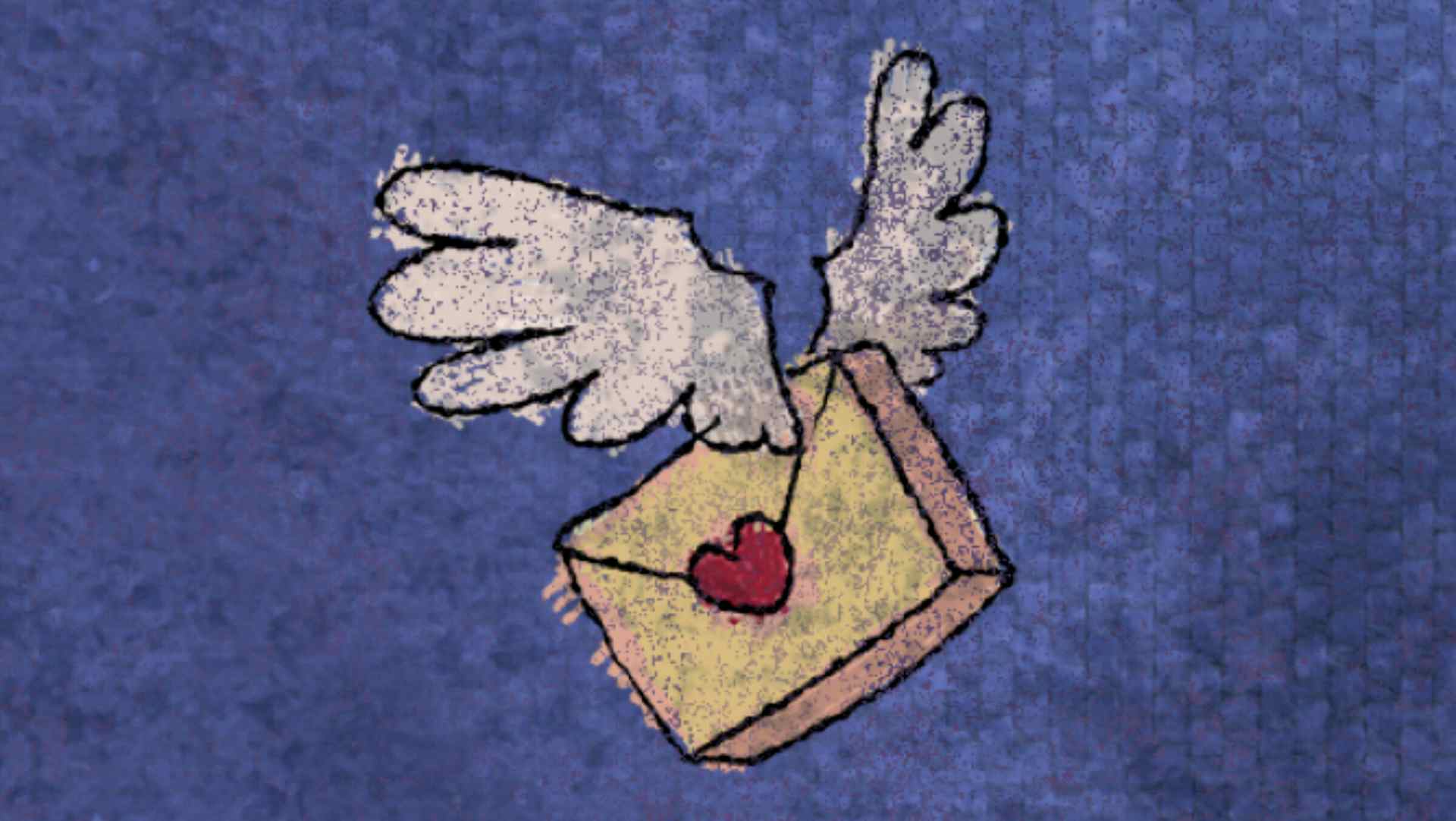
Rent By Mail:
Fast & Easy

